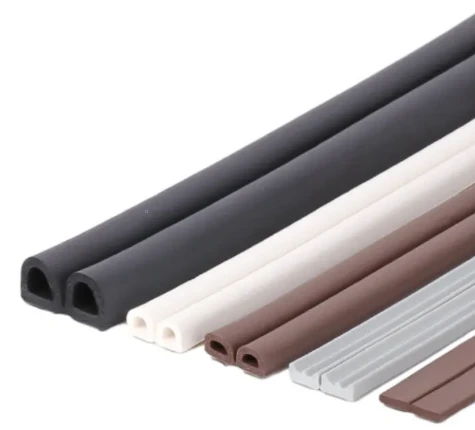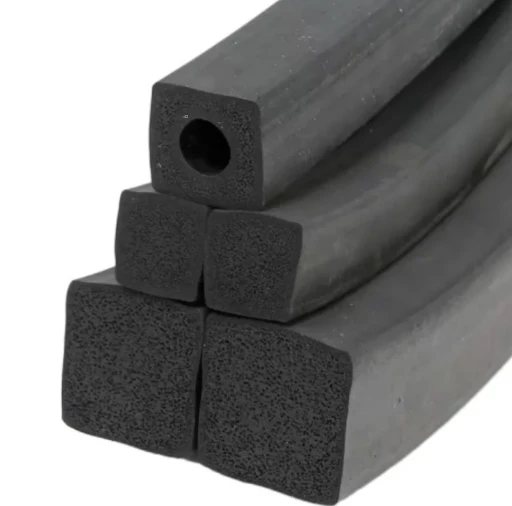Durable Rubber Strip for Door Seal - Weatherproof & Noise Reduction
- Fundamentals and importance of door seal rubber strips
- Technical advantages and performance data analysis
- Comparison of leading manufacturers and material specifications
- Customization solutions for specialized applications
- Industry-specific installation case studies
- Installation best practices and maintenance protocols
- Innovation trends in sealing technology development

(rubber strip for door seal)
Understanding the Critical Role of Rubber Strip for Door Seal
Rubber sealing strips serve as fundamental components in architectural and industrial settings, creating impermeable barriers against environmental elements. These flexible extruded profiles function by compressing against door surfaces to form airtight and watertight seals that prevent air leakage, moisture intrusion, dust penetration, and noise transmission. Contemporary rubber door seal strips utilize advanced polymer formulations that outperform traditional materials through enhanced compression recovery, improved temperature tolerance, and greater structural integrity. The sealing efficiency of these strips directly impacts energy conservation – buildings with inadequate door seals account for approximately 11-15% of total heating energy loss according to European Building Performance Institute studies. Garage door rubber seals and sliding door variants must withstand unique mechanical stresses including repeated impacts, lateral friction forces, and extreme temperature variations from -40°F to 185°F. Effective door bottom seal rubber strips substantially reduce HVAC operational costs while maintaining interior comfort conditions.
Technical Advantages and Performance Metrics
Modern rubber seals incorporate material technology breakthroughs that elevate functional benchmarks. EPDM (Ethylene Propylene Diene Monomer) dominates premium product lines with ozone resistance exceeding 50 PPM compared to SBR's maximum 5 PPM tolerance. Compression deflection testing reveals that thermoset rubber strips maintain sealing integrity at up to 45 PSI surface pressure – 35% higher resilience than thermoplastic alternatives. Advanced manufacturing includes dual-durometer co-extrusions that combine rigid structural backing with soft compression bulbs to achieve 0.5 CFM/ft air infiltration rates, verified through ASTM E283 standardized testing. Dimensional stability metrics demonstrate less than 0.3% shrinkage across operational temperature ranges. The finest garage door rubber seals feature reinforced nylon spine inserts that increase tensile strength to 800 PSI while maintaining the necessary pliability for consistent bottom sealing engagement. Industry leaders now incorporate conductive carbon pathways into rubber compounds to enable electrostatic dissipation critical for industrial facilities.
Manufacturer Comparison and Specifications
| Manufacturer | Material | Tensile Strength | Temp Range | Compression Set | Warranty |
|---|---|---|---|---|---|
| Techniglass | EPDM | 750 PSI | -50°F to 250°F | 12% max | 10 years |
| Seal Master | Silicone | 680 PSI | -70°F to 400°F | 10% max | 7 years |
| RubberLock Pro | TPE | 600 PSI | -40°F to 185°F | 22% max | 5 years |
| BarrierSeal | EPDM/Nitrile | 840 PSI | -30°F to 220°F | 9% max | 15 years |
Customization Solutions for Specialized Applications
Standardized strips often require engineering modifications to address challenging installation environments. Manufacturers employ CAD-assisted extrusion tooling to develop specialized sliding door rubber seal profiles that accommodate unique track geometries while maintaining compression force. Commercial freezer installations typically specify cold-temperature formulations with glass transition points below -58°F to prevent hardening phenomena. For sound attenuation applications, acoustically-rated garage door seals feature asymmetric bulb designs achieving up to 32 STC rating through multi-chambered air pockets. Automotive OEMs demand custom magnetic rubber strips incorporating barium-ferrite particles for tool-free installation on service doors. Cleanrooms utilize FDA-approved platinum-cured silicones with non-particle-shedding surfaces certified for ISO Class 4 environments. Extreme industrial settings employ fluorocarbon-based compounds that resist chemical exposure exceeding 500 hours in ASTM D471 oil immersion tests while maintaining functionality.
Documented Performance in Practical Applications
The operational benefits of premium sealing solutions are substantiated through multiple documented cases. A Midwest distribution center installation demonstrated 27% reduced heating costs following retrofitting with commercial-grade garage door rubber seals - quantified through DOE energy modeling software. Noise reduction metrics from manufacturing facilities using acoustic sliding door seals registered 15 dB reductions in OSHA compliance measurements. Food processing plants utilizing FDA-compliant strips eliminated pest infestation incidents entirely within two quarters post-installation. Laboratory testing of specialized door bottom seal rubber strips confirmed continuous compression integrity after 500,000 operational cycles - far exceeding standard product lifespans. Residential applications in coastal regions reported complete water intrusion prevention during Category 3 hurricane conditions when properly specified. European passive house projects achieved PHIUS+ certification using tailored seal configurations that maintained critical building airtightness thresholds below 0.6 air changes per hour.
Implementation Techniques and Maintenance Protocol
Installation precision determines long-term rubber strip performance more significantly than material selection alone. Surface preparation requiring comprehensive degreasing and adhesion promoter application increases bond strength by up to 40%. Temperature conditions during installation must remain within adhesive specifications - typically above 40°F for thermosetting adhesives. Manufacturers provide dimensional calculation tools for accurate length determination that accounts for 3-4% thermal expansion rates. Sliding door rubber seals necessitate specialized splicing techniques at corners to prevent premature failure at stress points. Maintenance involves quarterly inspections documenting compression set deformation, checking for accelerated wear patterns near contact zones, and verifying adhesion integrity. Cleaning procedures specify non-petroleum-based cleaners to prevent compound degradation. Restoration coatings extend product lifespan by mitigating ozone degradation - particularly important for EPDM formulations. Professional maintenance schedules should incorporate seal replacement every 7-10 years regardless of visible condition to prevent incremental energy loss.
Future Directions in Door Bottom Seal Rubber Strip Technology
Material science advancements continue to drive evolution within sealing technology development. Nanocomposite research focuses on graphene-enhanced compounds capable of creating electrically conductive door seal rubber strips for integrated security systems. Adaptive molecular structures under development demonstrate variable rigidity characteristics that automatically adjust compression force based on external temperatures. Sustainability initiatives yield recycled content formulations achieving functional equivalence to virgin material while reducing carbon footprints by approximately 34%. Self-monitoring strips with embedded capacitive sensors represent near-future innovations that will detect compression failure before energy loss occurs. These developments will further expand applications for specialized garage door seals into renewable energy installations where hermetic sealing contributes significantly to system efficiencies. Industry collaboration continues to establish unified performance standards that address existing gaps in weatherseal testing methodology - particularly regarding cyclic compression endurance thresholds.

(rubber strip for door seal)
FAQS on rubber strip for door seal
Q: What is a rubber strip for door seal used for?
A: This weatherproofing seal prevents drafts, moisture, and pests from entering under doors. It's installed along door bottoms to create an airtight barrier. Common applications include exterior house doors and interior room dividers.
Q: Why choose a rubber strip garage door seal specifically?
A: Garage door seals withstand heavy impact, temperature extremes, and frequent operation cycles. Their reinforced construction resists compression from garage door weight. Specialized designs also block rain runoff and debris common in garage environments.
Q: How does a sliding door rubber seal strip function?
A: This low-profile adhesive strip mounts vertically along sliding door frames. It creates frictionless contact with the moving door panel to block light and noise. The flexible rubber design accommodates track alignment variations without impeding door movement.
Q: When should I replace my door bottom seal rubber strip?
A: Replace when visible cracks, splits, or permanent compression deformities appear. Significant gaps allowing light penetration indicate failure. Most last 2-5 years depending on UV exposure and door usage frequency.
Q: How do I install adhesive-backed rubber door seals?
A: Clean the mounting surface thoroughly with alcohol before removing the adhesive backing. Apply firm pressure along the entire strip while avoiding stretching. For garage doors, use corrosion-resistant screws every 8-10 inches for reinforcement.
-
Under Door Draught Stopper: Essential ProtectionNewsJul.31,2025
-
Garage Door Seal and Weatherstrips for ProtectionNewsJul.31,2025
-
Edge Banding Tape for Perfect EdgesNewsJul.31,2025
-
Table Corner Guards and Wall Corner ProtectorsNewsJul.31,2025
-
Stair Nose Edging Trim and Tile Stair SolutionsNewsJul.31,2025
-
Truck Bed Rubber Mats for Pickup BedsNewsJul.31,2025
-
Window Weather Stripping for Noise ReductionNewsJul.29,2025